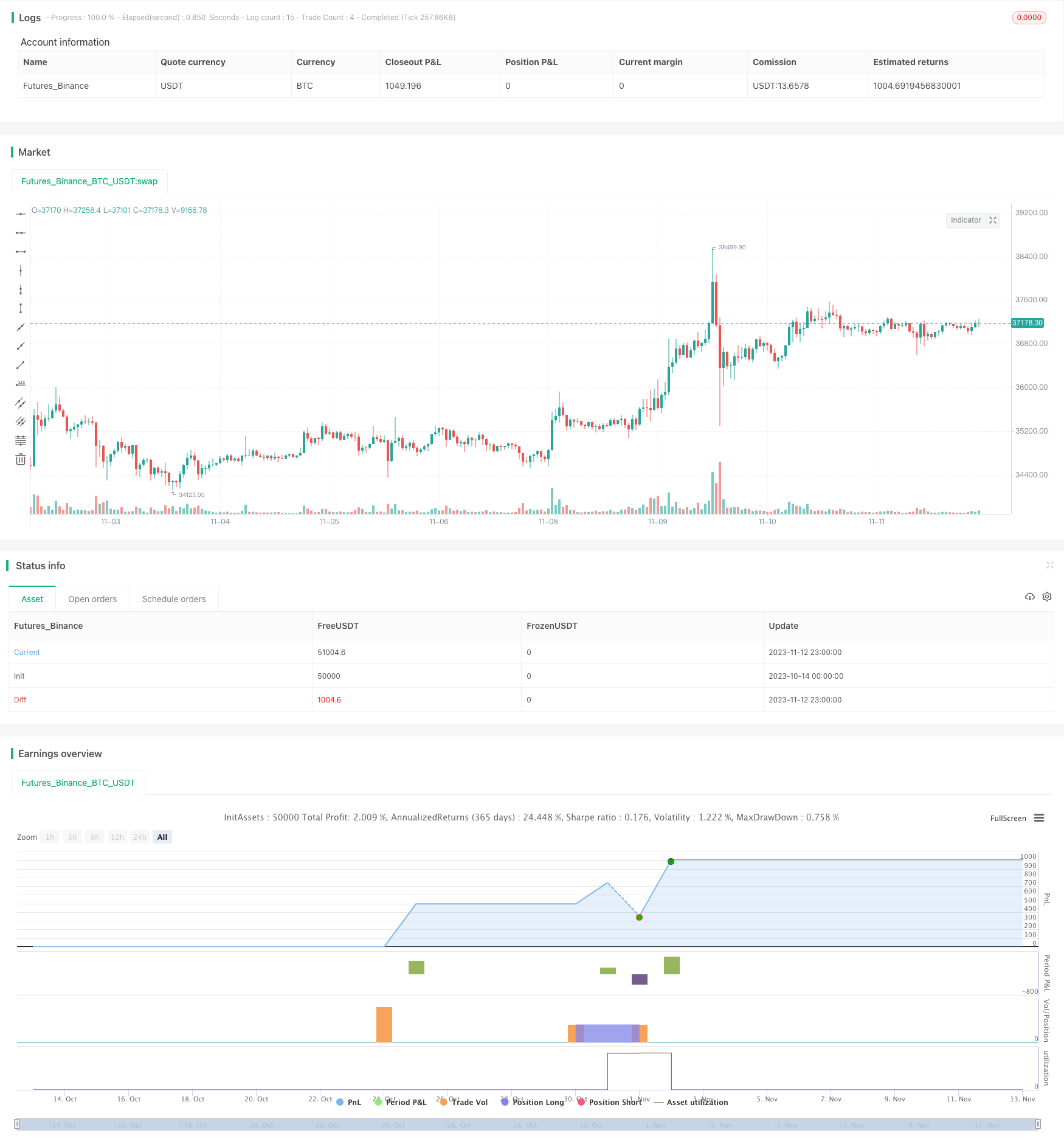
概述
本策略为改进版的涡轮指标策略,在原有涡轮指标的基础上,增加了多项新功能,包括基于阈值进行买卖信号触发、使用EMA平滑涡轮线、添加止损止盈、实现只做多、只做空或双向交易等。该策略适用于希望利用改进涡轮指标进行量化交易的投资者。
原理
该策略的核心指标是改进版的涡轮指标。传统涡轮指标通过计算价格波动的绝对值之和,形成正负涡轮线。当正涡轮线上穿负涡轮线时,为买入信号;当负涡轮线下穿正涡轮线时,为卖出信号。
本策略对传统涡轮指标进行了升级:
不再仅根据涡轮线的交叉来判断买卖,而是引入阈值概念。只有当正负涡轮线之间的差价超过设定的阈值时,才会触发买卖。这可以过滤掉部分无效的小幅度交叉信号。
对涡轮线进行EMA平滑处理,以减少曲线的抖动。
添加止损止盈设置,可以预设盈亏比例,更精细控制风险。
可以选择只做多、只做空或双向交易,满足不同需求。
基于以上改进,该策略可以更可靠地捕捉趋势,在回测中表现出色。
优势分析
改进后的涡轮指标滤除无效信号,可以有效避免假突破。EMA平滑处理也有助于去噪。
采用阈值判断买卖信号,而非简单交叉,可以更可靠地判断趋势转折点。
添加止损止盈功能,可以预设盈亏比来控制单笔交易风险,符合理性交易原则。
可选择只做多、只做空或双向,可以灵活适应市场不同阶段,满足不同交易者的需求。
该策略参数设计合理,回测表现较好,具有实际运用价值。
风险分析
该策略主要适用于趋势性行情,在盘整市场中表现可能会受到影响。
涡轮线本身对股票波动较为敏感,参数设置不当可能导致过于频繁交易。
阈值设置过高会错过买卖点,过低会增加假信号,需要仔细测试找到最佳参数。
市场存在异常行情时,止损可能被突破,需要警惕此风险。
优化方向
可以考虑结合其他指标进行组合,在确定信号时引入更多因素判断。
可以测试不同股票对参数的敏感性,优化参数设置。
可以研究自适应止损技巧,在大趋势中随价格调整止损位。
可以引入机器学习等技术,训练模型自动优化参数。
可以探索基于该策略的指数化方法,扩大策略容量。
总结
本策略在传统涡轮指标的基础上进行了多项改进,形成一个较为成熟可靠的量化交易方案。它结合趋势判断和风险控制的优点,既可以避免零散交易的过拟合风险,也可以利用指标本身的趋势捕捉能力。通过参数优化和组合技术的应用,该策略可以进一步增强稳定性和跟踪能力。总体来说,本策略具有一定的实践价值,是涡轮指标策略的一个提升版本。
/*backtest
start: 2023-10-14 00:00:00
end: 2023-11-13 00:00:00
period: 1h
basePeriod: 15m
exchanges: [{"eid":"Futures_Binance","currency":"BTC_USDT"}]
*/
// [Guz] Custom Vortex
// Custom version of the Vortex indicators that adds many features:
// -Triggers trades after a threshold is reached instead of the normal vortex lines cross (once the difference between the 2 lines is important enough)
// -Smooths the Vortex lines with an EMA
// -Adds Take Profit and Stop Loss selection
// -Adds the possibility to go Long only, Short only or both of them
// ! notice that it uses 10% position size and 0.04% trade fee, found on some crypto exchanges futures contracts
// Allows testing leverage with position size moddification (values above 100%, to be done with caution)
// Not an investment advice
//@version=4
strategy(title="%-[Guz] Vortex Indicator Custom", shorttitle="%-[Guz] Vortex Indicator Custom", overlay=true)
period_ = input(300, title="Length", minval=2)
VMP = sum( abs( high - low[1]), period_ )
VMM = sum( abs( low - high[1]), period_ )
STR = sum( atr(1), period_ )
ema_len = input(title="EMA Length", defval=7)
tresh= input(title="Threshold", defval=16.2, step=0.1)
VIP = ema(VMP / STR,ema_len)
VIM = ema(VMM / STR,ema_len)
//plot(VIP, title="VI +", color=#2962FF)
//plot(VIM, title="VI -", color=#E91E63)
condition_long = crossover(VIP-VIM, tresh/100)
condition_close = cross(VIP-VIM,0)
condition_short = crossunder(VIP-VIM, -tresh/100)
is_short=input(true,title="Do Short?")
is_long=input(true,title="Do Long?")
if (condition_long and is_long)
strategy.entry("VortexLE", strategy.long, comment="Long Algo")
if (condition_short and is_short)
strategy.entry("VortexSE", strategy.short, comment="Short Algo")
if (condition_close)
strategy.close_all()
//plot(strategy.equity, title="equity", color=color.red, linewidth=2, style=plot.style_areabr)
stop_loss_long_percent = input(2.5, title="Stop Loss Long", minval=0.1, step=0.1)
stop_loss_long = (1-stop_loss_long_percent/100)*strategy.position_avg_price
take_profit_long_percent = input(1.5, title="Take Profit Long", minval=0.1, step=0.1)
take_profit_long = (1+take_profit_long_percent/100)*strategy.position_avg_price
stop_loss_short_percent = input(2.5,title="Stop Loss Short", minval=0.1, step=0.1)
stop_loss_short = (1+stop_loss_short_percent/100)*strategy.position_avg_price
take_profit_short_percent = input(1.7,title="Take Profit Short", minval=0.1, step=0.1)
take_profit_short = (1-take_profit_short_percent/100)*strategy.position_avg_price
strategy.exit("TP-SL Long", "VortexLE", limit = take_profit_long , stop = stop_loss_long) //, trail_price = trail_price_long , trail_offset = trail_offset_long) //, trail_offset=tsl_offset_tick, trail_price=tsl_offset_tick)
strategy.exit("TP-SL Short", "VortexSE", limit = take_profit_short , stop = stop_loss_short)